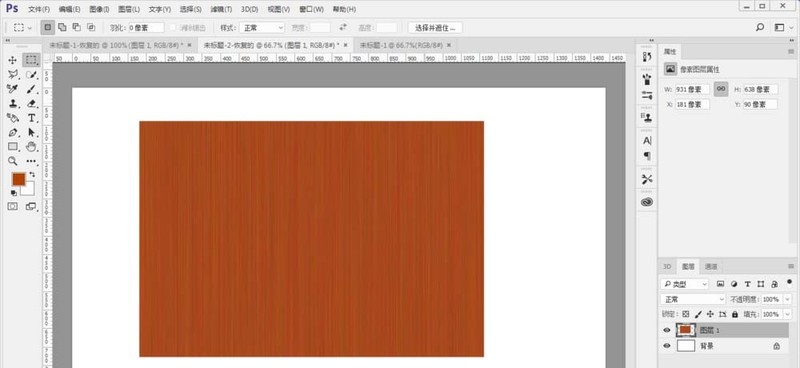
Course Intermediate 11340
Course Introduction:"Self-study IT Network Linux Load Balancing Video Tutorial" mainly implements Linux load balancing by performing script operations on web, lvs and Linux under nagin.

Course Advanced 17646
Course Introduction:"Shangxuetang MySQL Video Tutorial" introduces you to the process from installing to using the MySQL database, and introduces the specific operations of each link in detail.

Course Advanced 11353
Course Introduction:"Brothers Band Front-end Example Display Video Tutorial" introduces examples of HTML5 and CSS3 technologies to everyone, so that everyone can become more proficient in using HTML5 and CSS3.
2023-08-22 14:58:06 0 2 498
2022-06-13 15:06:16 0 1 1282
Ways to fix issue 2003 (HY000): Unable to connect to MySQL server 'db_mysql:3306' (111)
2023-09-05 11:18:47 0 1 830
Experiment with sorting after query limit
2023-09-05 14:46:42 0 1 730
CSS Grid: Create new row when child content overflows column width
2023-09-05 15:18:28 0 1 619

Course Introduction:1. Put the car photo into Photoshop and press CTRL+J to copy a layer. When using blur methods such as filter, blur, and radial blur, select Zoom and drag the center store in the center blur box to the position of the front of your car, which is the direction your car is facing. For example, this car is facing the lower right corner, so drag the center to the lower right corner. 3. Once the entire image is blurred, use a mask on the layer. Then use the black paint brush tool to paint the front and tires of the car. Until the car has a speeding motion blur effect. 4. Process the tire, return to the background layer, use the Elliptical Marquee Tool to select the tire, press CTRL+J to select it individually, use [Radial Blur] again, this time select [Rotate] for [Blur Method] 】, center
2024-04-01 comment 0 996

Course Introduction:The deep reinforcement learning team of the Institute of Automation, Chinese Academy of Sciences, together with Li Auto and others, proposed a new closed-loop planning framework for autonomous driving based on the multi-modal large language model MLLM - PlanAgent. This method takes a bird's-eye view of the scene and graph-based text prompts as input, and uses the multi-modal understanding and common sense reasoning capabilities of the multi-modal large language model to perform hierarchical reasoning from scene understanding to the generation of horizontal and vertical movement instructions, and Further generate the instructions required by the planner. The method is tested on the large-scale and challenging nuPlan benchmark, and experiments show that PlanAgent achieves state-of-the-art (SOTA) performance on both regular and long-tail scenarios. Compared with conventional large language model (LLM) methods, PlanAgent
2024-06-08 comment 0 358

Course Introduction:First, let’s take a look at the model, enter [3D View], check [Scope: Section Box] in the properties panel, and then a section box will appear in the 3D model. Entering the upper elevation view, you can clearly see that the section box is inconsistent with the model range to be intercepted. What should I do? Click the section box to activate the section box. At this time, in addition to the drag handles in 6 directions in the active state, the section box also has a rotation symbol at the corner point. (Enter the upper elevation view to facilitate control of the rotation direction) This rotation symbol is the key point! ! Drag the mouse to the appropriate position. The section frame is now rotated. You can also click and select the section box and use the [Rotate] command of the modification panel. It is also OK. Finally, drag the handles in the 6 directions to adjust the range of the section.
2024-04-25 comment 0 474

Course Introduction:Create a wood grain effect: Filter-Noise-Add Noise. Filter-Blur-Motion Blur, create an ellipse below as the desktop, fill it with black (the color can be set at will), hide the wood grain, and move the desktop layer up 50px. Select the marquee tool to select the 50px pixel space below to display the wood grain effect. After free transformation with ctrl+t, stretch the wood grain effect to cover the canvas. ctrl+j copy the place selected by the marquee tool and transform the wood grain effect. Make a clipping mask of the desktop layer, select the bar box layer copied below, adjust the curve ctrl+m, and create a folding effect. Select the desktop layer, ctrl+t to bring up the property bar, select perspective, and press as shown in the picture To demonstrate the operation, move the wood grain closer to the middle to form a perspective effect. The final effect is as shown in the figure.
2024-04-17 comment 0 1032

Course Introduction:1. First put your car photo into PS and press CTRL+J to copy a layer. We use [Filter] [Blur] and [Radial Blur]. In the [Blur Method], select Zoom, and then drag the center store in the center blur box to the position of the front of your car, which is the direction of your car body. For example, our car is facing the lower right corner, so drag the center to the lower right corner. 3. After the entire image is blurred, we use a mask on the layer. Then use the black paint brush tool to paint the front and tires of the car. Until the car has a speeding motion blur effect. 4. Next process the tires, return to the background layer, use the Elliptical Marquee Tool to select the tires, press CTRL+J to select them individually, use [Radial Blur] again, this time [Model]
2024-06-09 comment 0 452